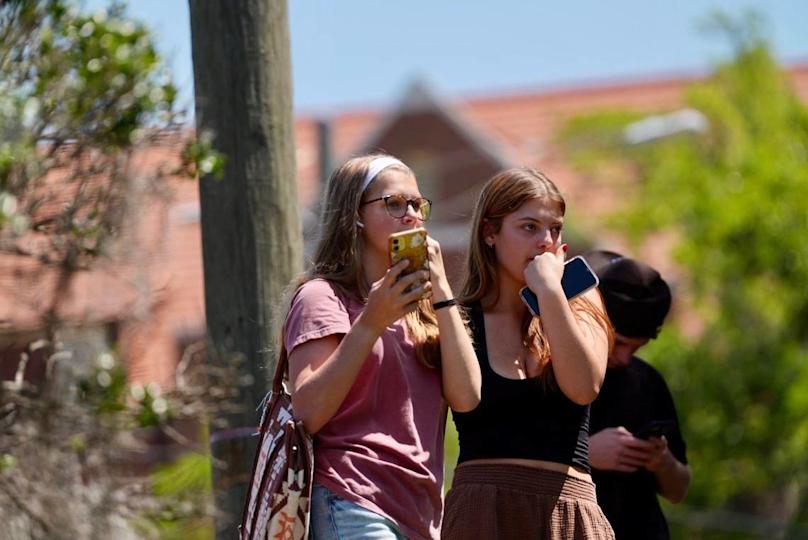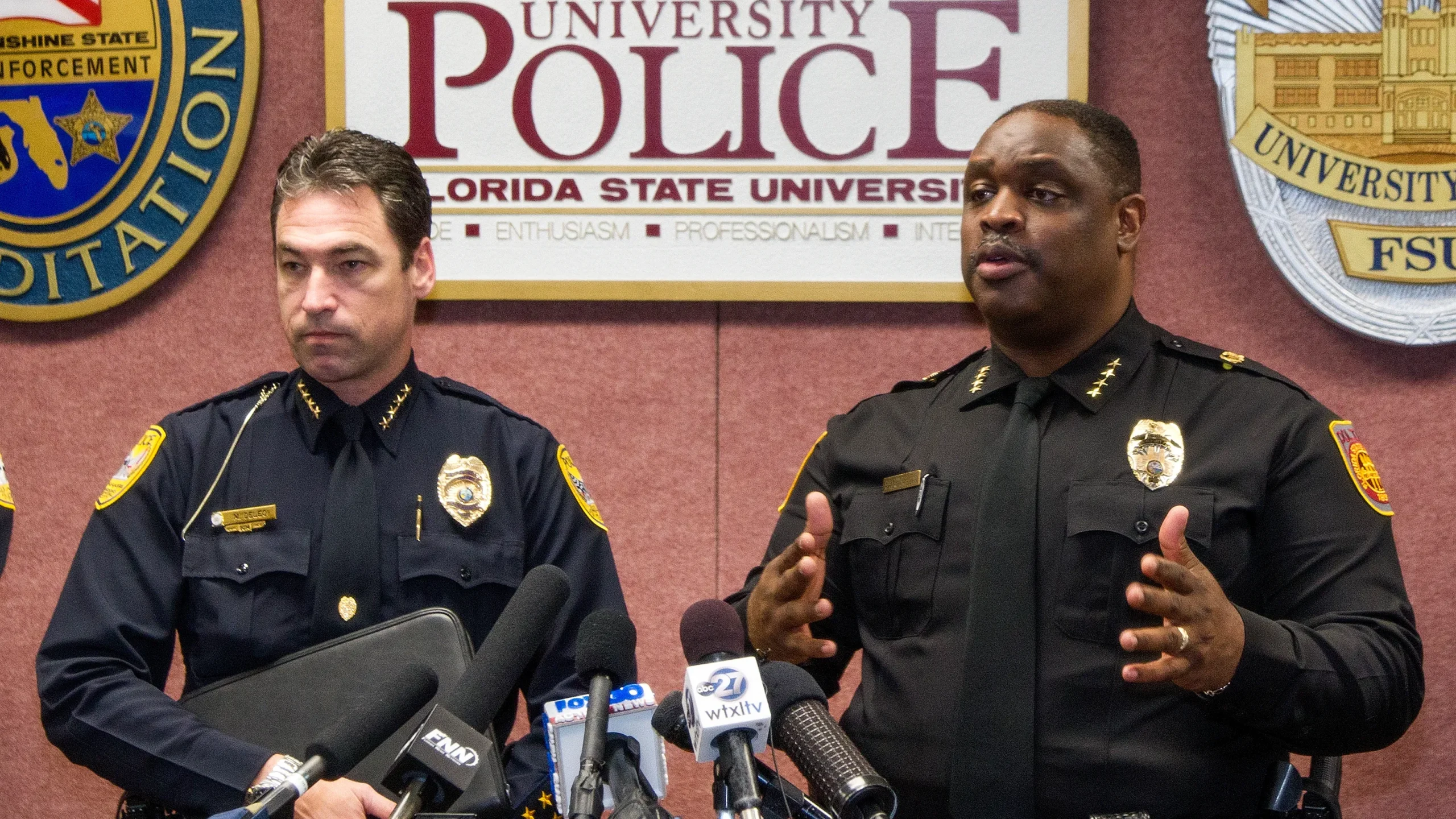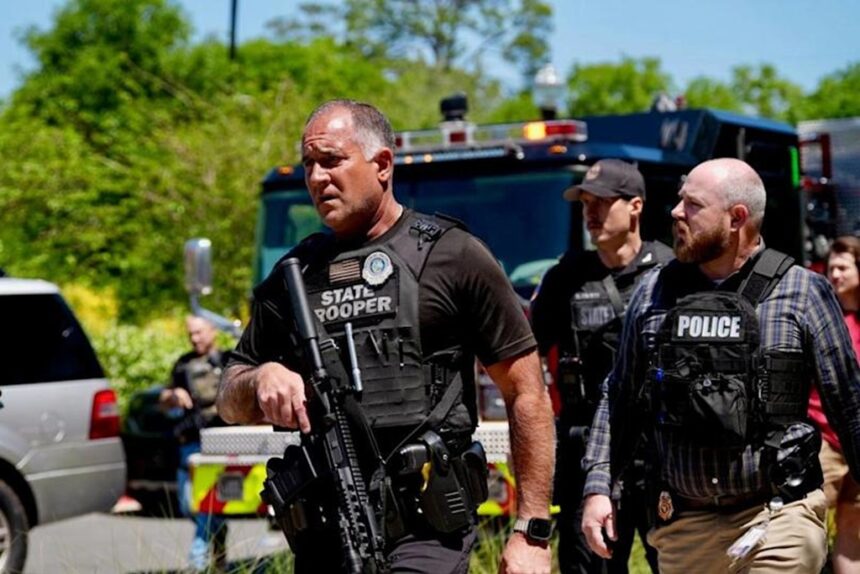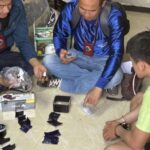A gunman opened fire at Florida State University (FSU) on Thursday, leaving two people dead and six others injured. Police confirmed the shooter was Phoenix Ikner, 20, the son of a Leon County Sheriff’s deputy. He used his mother’s handgun, which he accessed before starting his attack on campus.
Ikner, believed to be a student at FSU, was shot by police and arrested. He was taken to hospital for treatment. His mother works for the sheriff’s office, assigned to protect a local school.
The names of those killed have not been made public. Authorities stated that neither of the two people who died were students at FSU. Six people remained in hospital, with one in critical condition.
Leon County Sheriff Walter McNeil said his department was familiar with Ikner. He had participated in the agency’s Youth Advisory Council and several training programmes. McNeil explained that given Ikner’s background, it was not surprising he had access to weapons.
No motive was shared during the press conference.
The shooting began around midday. Police responded quickly, securing the FSU campus and focusing on the area near the student union. Students sheltered in classrooms and the library. Footage taken by a student showed the gunman walking calmly, firing shots as people fled.
Abandoned belongings, such as laptops and backpacks, were left scattered across the grass. Freshman Raiden Paniagua, who was nearby when the shooting began, described the chaos and fear as students ran for safety.
By mid-afternoon, Tallahassee Police had secured the campus, but the student union and its surroundings remained an active crime scene. The incident caused the Florida Capitol to briefly lock down and drew national attention.
President Donald Trump commented on the incident, calling it a terrible tragedy.

FSU Campus in Shock
The first warning came at 12:02 p.m. through the university’s alert system, urging students to shelter and stay away from windows and doors.
Victor Alonso, a 19-year-old student, was in class next to the student union when his phone received the active shooter alert. He and his classmates quickly barricaded the door. He remembers hearing gunshots and helicopters.
Police later evacuated his class multiple times, moving him and others across campus before allowing them back to their dorms.
“Everyone’s angry,” Alonso said. “I don’t know how this can happen.”
Raeleen McDaniel, 26, was watching a video in class when she heard the gunfire. At first, her group thought it was part of the video until they saw others running and dropped to the floor for safety. The shock hadn’t worn off hours later. “I knew a shooting could happen, but I never thought it would be us,” she said.
Police from several agencies, including the FBI, arrived on campus. Videos shared online showed students with their hands up and officers moving quickly through the grounds. Later, police directed students to safe areas and used code words to let those hiding know it was safe to come out.
Authorities told students to contact their families and offered rides to a family reunification centre at The Donald L. Tucker Civic Center. Classes were cancelled for the rest of the week.

Police Share More Details
The handgun used in the attack once belonged to Ikner’s mother as her service weapon. She purchased it for personal use after her time on duty. Police also found a shotgun with Ikner, but they do not believe it was fired.
The deputy has not been suspended, but there will be a full investigation.
This event deeply affected the FSU community, leaving many upset and searching for answers. The university has offered support to students and staff as they try to process what happened.
According to Grok, University campus shootings in the United States are a subset of gun violence incidents that occur at higher education institutions. These events, while statistically rare compared to overall gun violence, have significant impacts due to their public nature and the vulnerability of campus environments.
College shooters are often current or former students with a prior connection to the campus. They are typically male, with a history of mental illness, suicidal tendencies, or childhood trauma. According to The Violence Project, 56% of college mass shooters were immigrants, 44% Asian, and 33% white, with an average age of 28.
Common drivers include revenge, alienation, or grievances (e.g., being denied tenure, as in the 2010 University of Alabama shooting). Many shooters exhibit warning signs, such as communicating intent to harm, and often die by suicide (five of nine college mass shooters in one dataset).
Handguns are commonly used, often legally obtained. For example, the FSU shooter used a former sheriff’s deputy’s weapon.
Related News:
Frustrated protesters attack Trump and Musk in the Film Hands Off!

Geoff Thomas is an award winning journalist known for his sharp insights and no-nonsense reporting style. Over the years he has worked for Reuters and the Canadian Press covering everything from political scandals to human interest stories. He brings a clear and direct approach to his work.














